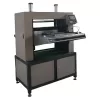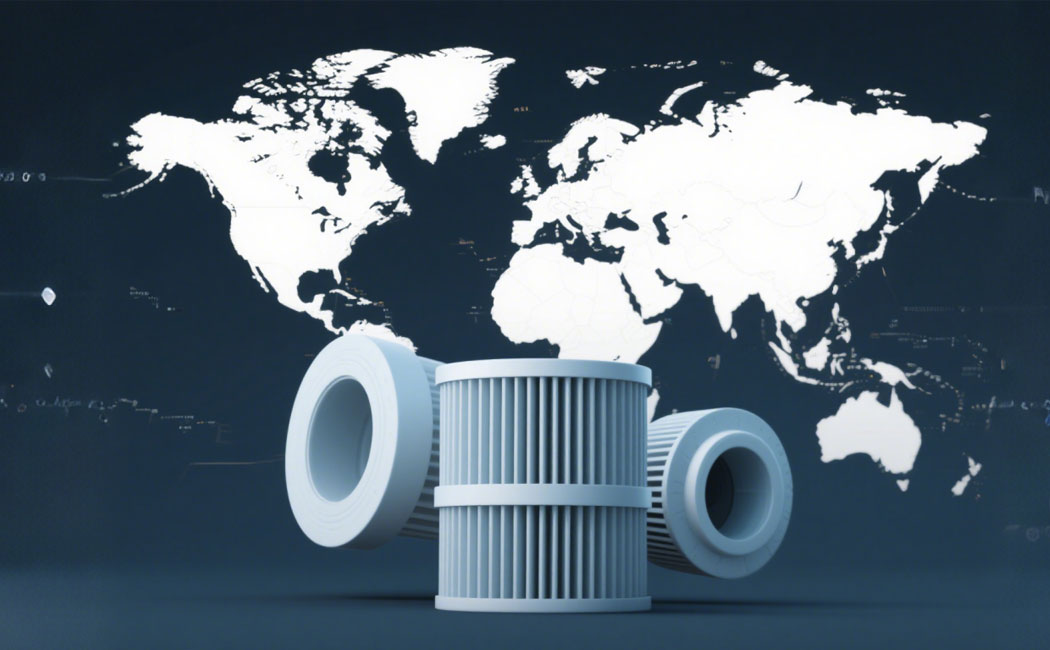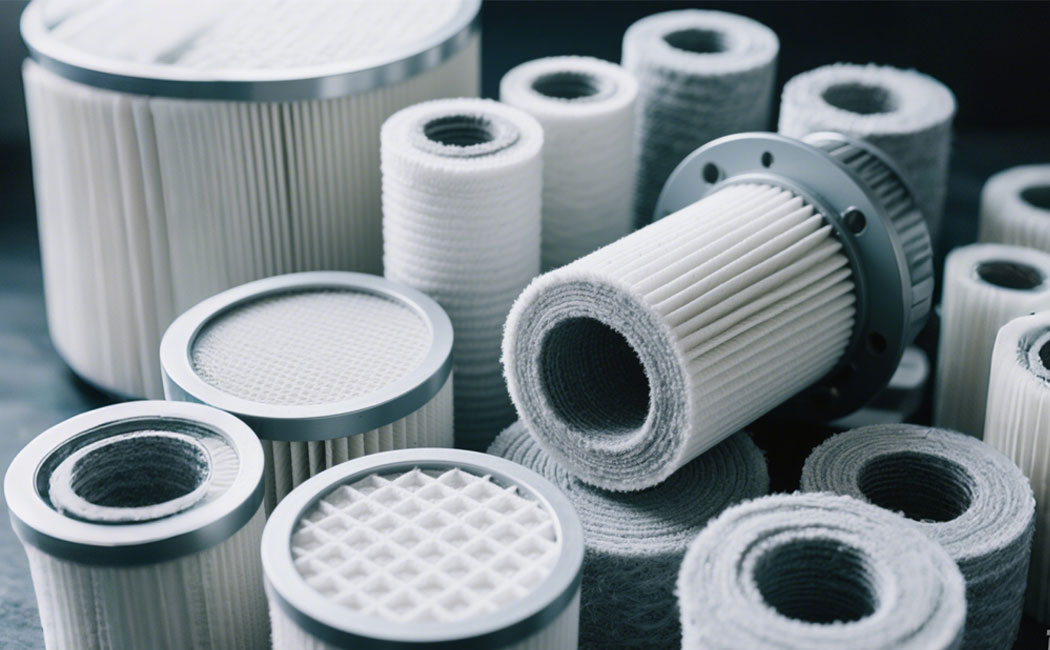A Comprehensive Guide to Filters:Types, Functions, and Selection Criteria
Filters are components that use filter paper to remove impurities or gases. They are essential parts of automobiles, mechanical equipment, and industrial systems, acting as “guardians” to ensure the purity of various media and guarantee the proper functioning of equipment.
Air, oil, and fuel filters are generally referred to as the “three filters,” and when combined with the cabin air filter, they are commonly known as the “four filters.” They are responsible for filtering media in the lubrication system, combustion system, engine intake system, and cabin air circulation system.
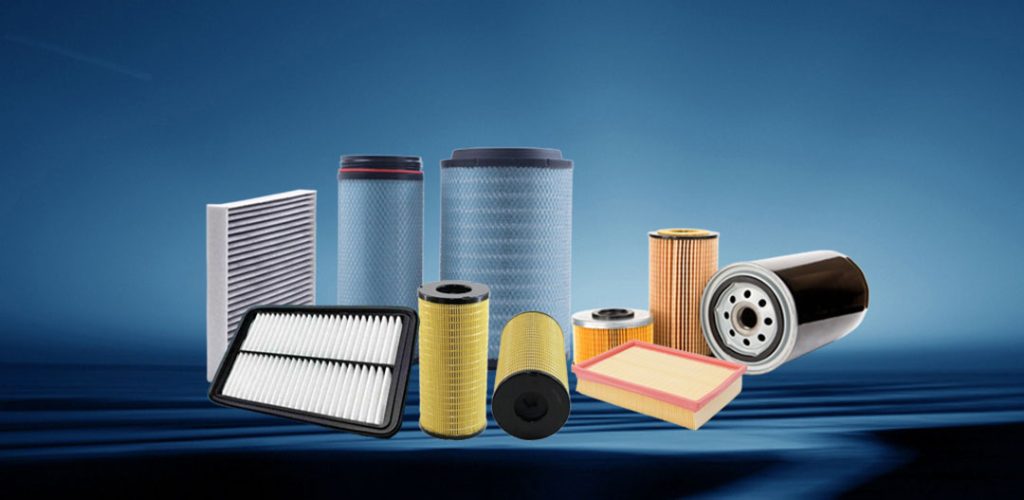
Classification by Filter Media
1. Air Filter
Located in the engine intake system, an air filter consists of one or several filtering components. Its main function is to remove impurities, dust, and particles from the air entering the engine or equipment. The performance of the air filter is critical to extending the machine’s service life.
Applications: Automotive engine intake systems, industrial air compressors, ventilation systems
Types:
· Dry air filters (paper filter element)
· Oil-bath air filters
· Two-stage air filters (commonly used in dusty environments)
2. Oil Filter
Located at the top front or bottom of the engine, its primary function is to remove impurities such as dust, metal particles, carbon deposits, and soot from the oil, delivering clean oil to various lubrication points.
Applications: Automotive engine lubrication systems, industrial mechanical equipment lubrication systems
Types:
· Full-flow filters
· Bypass filters
· Spin-on filters
· Cartridge filters
3. Fuel Filter
Generally located inside the fuel tank or along the fuel pipeline under the chassis, its main function is to filter impurity particles and water from the fuel, preventing corrosion and damage to the fuel system and ensuring the engine operates properly.
Applications: Gasoline engines, diesel engines
Types:
· Gasoline filters
· Diesel filters (typically require higher filtration precision)
· Water-separating fuel filters (specifically for diesel systems)
4. Cabin Air Filter
Also known as the air conditioning filter, its function is similar to that of an air filter—it filters impurities, odors, and harmful gases from the air entering the air conditioning system. The filtered air is then delivered through the air conditioning system into the vehicle cabin to regulate temperature and be inhaled by occupants.
A clogged cabin air filter can reduce air conditioning efficiency due to insufficient airflow. If the filter becomes moldy, it can introduce odors and mold spores into the cabin, posing health risks to occupants.
Applications: Automotive air conditioning systems, building air conditioning systems
Types:
· Standard particle filters
· Activated carbon filters (adsorb odors and harmful gases)
· Multi-functional filters (with antibacterial and anti-allergen layers)
Classification by Filtration Precision
Category Filtration Precision Primary Applications
Coarse Filter 10μm Pre-filtration stage, removing larger particles
Standard Filter 5-10μm General oil and fuel filtration
Fine Filter 1-5μm Precision filtration, protecting delicate components
Ultra-Fine Filter <1μm Special industrial applications, high-purity requirements
Classification by Structure
· Spin-on Filters: Commonly used in modern automobiles, easy to replace
· Cartridge Filters: Only the filter element needs replacement, the housing is reusable
· Panel Filters: Primarily used for air filtration, flat-panel structure
· Bag Filters: Mainly used for industrial liquid filtration
How to Choose the Right Filter?
Considerations:
1. Equipment Type and Working Environment: Dusty environments require more efficient air filters.
2. Filtration Precision Requirements: Follow the equipment manufacturer’s recommendations.
3. Flow Rate and Pressure Drop: Ensure the filter meets the system’s flow requirements.
4. Compatibility: Verify that the filter matches the interfaces of the existing equipment.
5. Quality and Certification: Choose branded products with quality certifications.
Selection Tips:
· Refer to the equipment manufacturer’s recommended specifications and models.
· Consider the usage environment and operational conditions.
· Compare performance parameters and prices of different brands.
· Check product certifications (e.g., ISO certification).
· Read user reviews and professional evaluations.
Filter Maintenance and Replacement Recommendations
· Oil Filter: Typically replaced every 10,000 kilometers or once a year, along with the oil change.
· Air Filter: Generally inspected and replaced every 12,000–15,000 kilometers or annually.
· Fuel Filter: Usually replaced every 20,000–40,000 kilometers.
· Cabin Air Filter: Typically replaced every 12 months or 20,000 kilometers.
(Note: Specific replacement intervals should follow the equipment manufacturer’s recommendations.)
Share:
Categories
- blog(46)
- Industry news(3)
- Technique articles(43)
Recent Posts
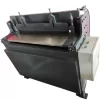
What is the melt filter trimming machine ...
11/20/2025 Comments Off on What is the melt filter trimming machine and how does it enhance the filtration system?
What is a Melt Filter Shrinking Machine ...
11/18/2025 Comments Off on What is a Melt Filter Shrinking Machine and Why is it Essential for Filter Manufacturing?
What is a melt filter extruder and ...
11/13/2025 Comments Off on What is a melt filter extruder and how does it enhance your filtration system?